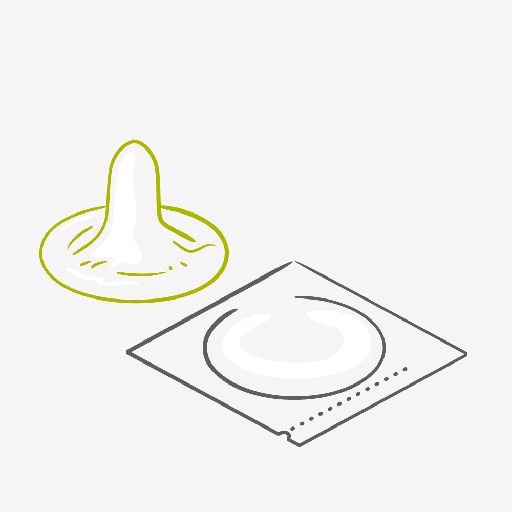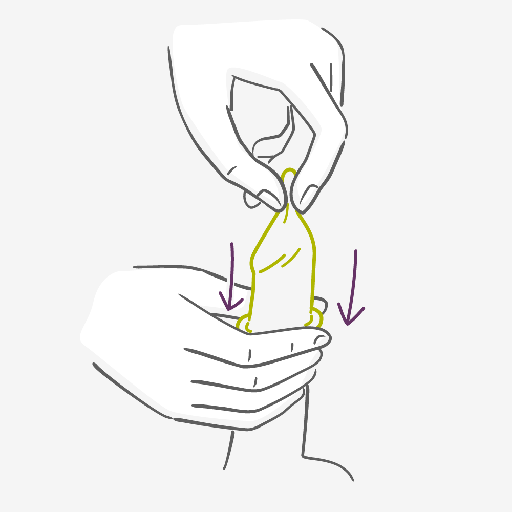CONDOM: THE MR. POPULAR TO PREVENT UNINTENDED PREGNANCY IN MALAYSIA
One of the most popular forms of contraception, condoms are a simple and cheap way to protect yourself against unplanned pregnancies and STIs. They work by catching the sperm as it is released and stopping it from entering the vagina at all. The tip has a reservoir which collects the man’s semen and prevents it from entering the vagina when he ejaculates. Along with female condoms they are the only form of contraception to protect you against STIs as well as pregnancy. The most important thing is that you use a condom every time you have sex.
Condoms come in all shapes, sizes, and for the sensitive, materials, so even with allergies or sensitive skin, there’s a condom to suit you comfortably.
How Do Condoms Work as a Method to Prevent Pregnancy?
Condoms are popularly known for preventing pregnancy. It can create a barrier between semen and the cervix, preventing sperm from reaching and fertilizing an egg.
When used correctly, male condoms are highly effective at preventing pregnancy and offer protection against sexually transmitted infections (STIs). However, the effectiveness may vary depending on factors such as incorrect use, breakage, and expiration.
Condoms Guide: The Right Type, Size, Price & Where to Buy Them
There are many different types of condoms available in the Malaysian market, each with its pros and cons. Latex condoms are the most common type, but non-latex condoms may be a better option for those with latex allergies or sensitivities. Ribbed or flavored condoms are another type of condom that is specifically created to provide added pleasure during sexual intercourse.
Additionally, it is still important to choose the right size of condoms for comfort and effectiveness. A small size condom can break or slip off, while a condom that is too large may not provide adequate protection.
The price of condoms can vary, but they are generally affordable and accessible. Condoms can be found at most drugstores, grocery stores, and convenience stores, as well as online.
Common Mistakes to Avoid When Using Condoms during Sexual Intercourse
To ensure maximum effectiveness and safety, it is important to use condoms correctly and avoid common mistakes. Some common mistakes include using an expired or broken condom, not leaving space at the tip for semen, and not using a new condom for each act of intercourse.
It is also important to use a lubricant to prevent condom breakage and to avoid oil-based lubricants, as they can weaken latex condoms
How to Dispose Condoms Safely after Used
Proper condom disposal is important for hygiene and environmental reasons. Condoms should be carefully removed after use and tied off to prevent spillage.
They can then be wrapped in tissue or toilet paper and thrown away in the trash. It is important not to flush condoms down the toilet, as they can clog pipes and harm the environment.
If you are concerned about privacy, consider disposing of condoms outside of your home or in a public trash can.

HOW TO WEAR / USE A CONDOM
Using a condom is easy, just unravel the condom onto an erect penis right before sex and there you go. Once it’s all over and the condom has done its job, pull it out before the penis softens. It should be held against the base of the penis as soon as ejaculation has occurred to ensure it does not slip off and to prevent any sperm from escaping as the penis is withdrawn. Use it only once and then throw it away.
It’s important to check what kind of lube is suitable for use with each condom’s material as some can have adverse effects on the material. For example, oil-based lube and latex aren’t friends, and putting them together can cause the condom to break or slip off, just an FYI.
PROS / CONS OF USING CONDOM AS BIRTH CONTROL METHOD
- It can be used on demand
- It can be easily carried with you
- It isn’t affected by other medications
- It can be used when breastfeeding
- Hormone free
- It’s easy to use
- It’s the best protection against HIV/AIDS and other sexually transmitted infections (STIs)
- It interrupts sex
- It can tear or come off during sex if not used properly
- Some people are allergic to latex condoms
- It may lead to irritation or allergic reactions (if you are allergic to latex, you can try condoms made of polyurethane)
FAQS ABOUT CONDOM FOR BIRTH CONTROL
Yes. Condoms have been proven to provide protection against sexually transmitted infections (STIs). In fact, condoms are the only contraceptive method that also provides STI protection. Condoms provide different levels of risk reduction for different STIs because infections are spread differently — some are spread by contact with bodily fluids while others are spread by skin to skin contact.
In general, research shows that condoms are most effective in preventing those STIs that are spread by bodily fluids, such as chlamydia, gonorrhea, and HIV. Condoms also can reduce the risk of contracting diseases spread by skin-to-skin contact, such as herpes and human papillomavirus (HPV). However, condoms only can protect against these diseases if the sores are in areas covered by the condom.
There are a range of tests performed by both regulatory agencies and the condom manufacturers. These include electronic testing, the water leak test, the air burst test and the strength test.
Check that the use-by date has not expired, that they carry a standards approval mark (either FDA, ISO, CE or the British Standard Kite Mark), and that they have been properly stored.
As with most barrier methods, it can take a bit of practice to use this method correctly. As long as you are clear on how to use them, you should get the hang of it.
Compared to modern hormonal methods, condoms are less reliable and effective in protecting against pregnancy but they are the only method that will protect against STIs, including HIV/AIDS.
Condoms are made in different lengths and widths, and different manufacturers produce varying sizes. There is no standard length for condoms, though those made from natural rubber will in addition always stretch if necessary to fit the length of the man's erect penis. The width of a condom can also vary. Some condoms have a slightly smaller width to give a ''closer'' fit, whereas others will be slightly larger.
Using two condoms at the same time-either two male condoms or a male and female condom- is not a good idea as the friction may result in one or both of the condoms tearing. If you want to take extra precautions against pregnancy when having sex, and are concerned about the possibility of a condom breaking it is better to use another form of contraception. For example, using a contraceptive pill, patch, vaginal ring or IUS as well as a condom will ensure that you both have double protection against pregnancy as well as protection against STIs.
No. When used as directed, condoms are effective in preventing pregnancy and are the only form of contraception that also can prevent STIs. This is why it’s important to follow directions for correct use.
If you are going to use a condom under water it is important that you put the condom on before you get into the water. Also, if the water contains chemicals such as chlorine, or additives such as soap, bath oil or bubble bath then this may affect the latex.
When used as directed (i.e. the condom doesn't split or burst), they can be very effective in preventing both pregnancy and sexually transmitted infections (STIs). If a condom is broken and no other form of contraception such as the contraceptive pill is used, then there is a risk that a woman may become pregnant, so you should consider using emergency contraception. There is also a risk of contracting a STI.
Yes. Many condoms come already lubricated on the outside, inside, or both but you can always add more as long as the lubricant is either water-based or silicone-based. Oil-based lubricants, like baby oil or petroleum jelly, can weaken latex so you should not use these. Always check the instructions for use when choosing a lubricant for use with a condom.






















